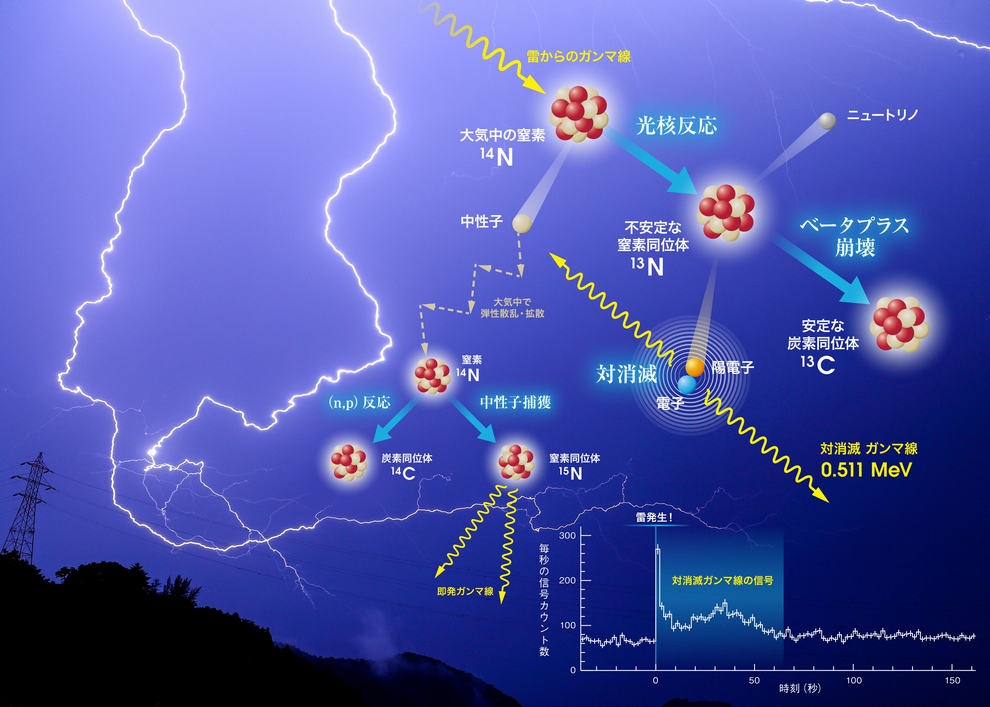Gamma-Ray Observation of Winter Thunderclouds (GROWTH) Collaboration
Project Gist
Developing High-Energy Atmospheric Physics in Japan
Keywords
Lightning, Thunderstorm, Particle acceleration, Photonuclear reactions, Open science
Background and Purpose
Lightning, one of the most familiar natural phenomena, still has many unsolved fundamental questions. Gamma-ray bursts associated with lightning discharges were discovered by astronomical satellites in orbit, named Terrestrial Gamma-ray Flashes (TGFs). High-energy radiations related with lightning or thunderclouds were also reported from ground-based experiments. There is a new growing interdisciplinary field of “high-energy atmospheric physics” in thunderclouds and lightning. Winter thunderstorms along the Japan Sea are famous for powerful lightning, and one of the most promising observation sites for this new field. This SPIRITS project is aiming at developing a new observation network for the winter thunderstorms in Japan.
Project Achievements
Newly developed portable radiation detectors were deployed at several locations along the Japan Sea. This new observation network successfully detected an intensive gamma-ray burst associated with a lightning discharge. With detailed analyses of recorded data, which showed evidence for neutrons and positrons generated at this event, the SPIRITS project observationally demonstrated photonuclear reactions of atmospheric nitrogen nuclei triggered by gamma rays from lightning (Enoto et al., Nature, 2017). Featured by many newspapers in the world, this result was selected one of the Top 10 Breakthrough in 2017 of the physics field by the Physics World journal. This project has been also observing several new high-energy phenomena related with lightning and thunderstorms (e.g., Wada et al., GRL, 2018).
Future Prospects
The team is aiming at expanding this observation network at Kanazawa city area to increase the number of high-energy events. The team also want to promote collaborations with citizen supporters, and some of the members have been coordinating monthly “Kyoto Open Science Meetup”. The scope of this project further includes observations using CubeSats to catch the related phenomena from outer space.
Figure

Principal Investigator

・ENOTO Teruaki
・Hakubi Center / Graduate School of Science
・Associate Professor of Kyoto University, Hakubi center. He graduated Department of Physics, Faculty of Science, the University of Tokyo in 2010. After working at Stanford University and NASA Goddard Space Flight Center, he started his new researches of X-ray astronomy and high-energy atmospheric physics at Kyoto University in 2015.
http://thdr.info/
http://www.kyoto-u.ac.jp/ja/research/research_results/2017/171123_1.html
http://www.kyoto-u.ac.jp/ja/research/research_results/2018/180517_2.html
